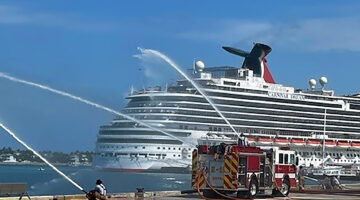BUSINESS LAW 101 / AFFRAYS, RIOTS AND UNLAWFUL ASSEMBLIES
By Albert L. Kelley, Esq.
For the last few years, the issues of affrays, riots and unlawful assemblies have been in the news. What is an affray? The statutory definition of an affray is when two or more people, by mutual consent, begin fighting in a public place to the terror of the people. A riot, on the other hand, is when a person willfully participates in a violent public disturbance with at least two other people, acting with a common intent to assist each other in violent and disorderly conduct, that results in an injury to another person, damage to property, or danger of injury to another person or damage to property. An unlawful assembly is when three or more people meet together to commit a breach of the peace, or to do any other unlawful act. So, lets break these down.
If two people start arguing and a fight breaks out, it is an affray. However, if one person is the aggressor and starts fighting with another who does not instigate the fight, it is not an affray. The second person is not consenting to the fight. At best it would be a case of self defense which is a defense to the charge of affray.
A riot does not require violence-only a public disturbance and disorderly conduct which leads to damage or a risk of damage. So if a group of people form and start destroying a building it could be deemed a riot.
An affray is a first-degree misdemeanor, while a riot is a third-degree felony. If the riot involves 25 or more people, causes great bodily harm to a person not participating in the riot, causes property damage in excess of $5,000, involves in any way a deadly weapon; or endangers the safe movement of a vehicle traveling on a public street, highway, or road, it rises to a second-degree felony.
It is possible for someone not actually rioting to be charged as well. If a person encourages others to riot, it is called Inciting a riot and is a third-degree felony. If the resulting riot leads to great bodily harm to another person not participating in the riot, leads to property damage in excess of $5,000, or if the person inciting the riot supplies a deadly weapon to another person or teaches another person to prepare a deadly weapon with intent that the deadly weapon be used in the riot, the charge increases to a second-degree felony.
Finally, we turn to unlawful assemblies. The Supreme Court has stated that if three or more people meet for an unlawful purpose, and the gathering of the people gives “rational, firm, and courageous persons in the neighborhood…” a well-grounded fear of a breach of the peace, it is sufficient. But the assembly must have an unlawful purpose. So, if a group of people start throwing bricks at cars or a building, it could be deemed an unlawful assembly. However, if a street gang meets on a neighborhood corner with nothing else, it is not an unlawful assembly, even if the neighborhood is in fear (In one case, the Court held that an assembly of people where some were smoking marijuana was not deemed a gathering for an unlawful purpose). While this charge is merely a second-degree misdemeanor, unlike other misdemeanor, the police cannot simply issue a notice to appear. They are required to take the offender into custody and hold him in jail until he can appear at a bond hearing before the judge.
[livemarket market_name="KONK Life LiveMarket" limit=3 category=“” show_signup=0 show_more=0]



No Comment